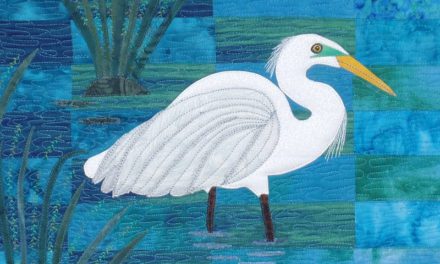 “This is a work of fiction, However, with a single exception (and as outrageous as some of them may sound) all the incidents described here really happened”… Thus begins the Author’s Note introducing The Chronicles of Willow Point, a new novel by Beaufort’s E.T. “Tommy” Baysden.The following is an excerpt from that novel . . .
“This is a work of fiction, However, with a single exception (and as outrageous as some of them may sound) all the incidents described here really happened”… Thus begins the Author’s Note introducing The Chronicles of Willow Point, a new novel by Beaufort’s E.T. “Tommy” Baysden.The following is an excerpt from that novel . . .
Chapter 33: Spring Island
Mack returned from the Palmetto Bluff adventure strangely revitalized. It was his first time away from Willow Point since their trip to Bell Hall and he had been fascinated by the hog hunt, if a little unnerved. There had always been feral pigs on Willow Point, but Bee Taylor kept them under control by trapping. And he’d certainly never seen anything like those dogs!
The Pinckneys’ lives now flowed like the Tulifinny – dazzling, unhurried days cooled by the early fall breezes that left the land fragrant from the autumn high tides. They hosted dove shoots on fields of mowed corn and sunflowers, the little grey rockets assaulting the food plots like Kamikazes on a death flight. Birds so small you ate only the breast, but what an epicurean delight they were!
Mack and Liz spent quality time with the kids, Rob’s symptoms now melting away as if from some sort of alchemy, the other two growing like weeds, exploring woods and waters, Liz occasionally taking them to the Breeze Theater, Beaufort’s only, for the Saturday matinee. Speckled Trout were biting in the river and even little Fran got into the fun of catching the delicious “specks.”
On one such bucolic, unscripted fall day, Mack decided to take the boat over to Spring Island and have lunch with Gordon Mobley.
“We’re doin ‘Smoke in the Hole!’” Gordon had announced when he called to invite Mack. That was something to get excited about.
Both the island itself and Gordon, who served as its manager for many years, were fixtures of unsurpassed uniqueness, not only in the Lowcountry, but anywhere you’d care to look. The island, named for the numerous freshwater springs that dotted its perimeter, was 3,000 acres of lush Lowcountry jungle surrounding massive parallel fields farmed by the colonial cotton planter George Edwards in 1801. Before that, the Indian trader John Cochran had built a mercantile on the banks of the Little Checheesee with a franchise from the Crown, in 1706. It is said he was killed by the Yemassee and the island fell to his brother James. As late as the 1920s, Colonel William Copp raised cattle on the Colleton River at the island’s south end.
The springs were a result of the island’s almost freakish elevation, due somehow to its formation in the Pleistocene Epoch, eons before all the surrounding land. It resulted in an honest-to-God waterfall near the island’s eastern shore, and
the largest forest of dwarf live oaks known anywhere north of Louisiana.
When Spring Island was purchased by Elisa Walker, Jr. and his wife Lucile in 1964, it had been transformed into a hunter’s paradise. Walker, a Wall Street financier and passionate sportsman, turned this jewel of nature into a magnificent outdoor cathedral, complete with a twelve foot statue of St. Frances of Assisi, created by a Brooklyn sculptor. Walker preserved the ruins of George Edward’s tabby mansion overlooking the Checheesee and created from the planter’s demised cotton fields one of the finest quail hunting venues in the South – an area already home to some of the world’s best hunting.
To turn Spring Island into a classic shooting plantation, Walker turned to Gordon Mobley, a young Georgian from a family of horse breeders and traders, bird dog trainers and fieldtrial champions. And what a family they were! With 13 kids, including a solitary girl, the Mobley’s were legendary throughout the region for their outsize personalities and wild and woolly ways. But they were, to a person, extremely bright and hard working – in a class by themselves. Some were outrageously witty and all had been bred, from years of managing dogs and horses for the wealthy, to be consummate hosts. All of them could cook, all were great storytellers, all could fix anything. They were part of a vanishing breed of outdoor generalists who helped to shape the country – the strong men and women who tamed the wilderness and opened the American West. They had a God-given gift for living off the land. They were part of the backbone of America.
Gordon’s “Smoke in the Hole” was a totally illogical method of cooking meat, but the result, which nobody could understand, was heavenly. It was typical of the off-the wall creativity often found among the Mobley’s. Into a four-foot hole in the loamy soil, about thirty inches in diameter, a hardwood fire was built and allowed to burn down to the hottest possible coals. Into the hole was lowered an entire top sirloin, a whole turkey, a leg of lamb, and three racks of pork ribs – all wrapped in several layers of tin foil and bound by ropes. The hole was then covered with a piece of flat plywood, covered in turn by a foot of sand. No smoke would escape out the top!
With no air getting out, it stood to reason that neither was any getting in to sustain the fire. But Gordon had taken that into account. Into a one inch diameter plastic pipe, inserted into the hole on the diagonal from about three feet away, James Mitchell blew a hair dryer at high volume, keeping the coals burning to maximum effect.
During the cooking, Gordon led a ceremonial dance around the hole with the diners holding hands and whooping like Indians. Finally, based on some internal clock known only to him, the plywood was removed and the foil-wrapped bundles
were lifted into the open air. There they were fallen upon by black and white alike, accompanied only by grocery store loaf bread and a big pot of Lowcountry Red Rice somebody had prepared, all fueled by the “pony” bottles of Miller Beer that became the island’s unofficial symbol.
Nobody ever understood the alchemy that created such succulent food from “Smoke in the Hole.” The moisture in the rich soil? The high pressure of the trapped smoke, fueled by the hair dryer? Nobody ever knew. But all agreed that Gordon Mobley
had created culinary history, albeit goofy, right there on Spring Island, cooking beneath the ground!
E.T. Baysden has spent most of the last half century in the SC Lowcountry, where he served as chief marketing officer for Sea Pines Resort, Callawassie Island, Spring Island, Oldfield Club, and Palmetto Bluff. He is also the author of The Rock Jaw Ladies Club: A Memoir of the Other Vietnam. He is a fly fisherman, an Episcopalian, and an avid Tar Heels fan. To learn more about his latest novel, visit www.baysdenbooks.com








